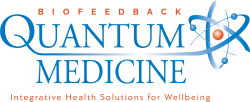The World Health Organization (2016) estimates that:
- 303 million people worldwide suffer from migraines on a regular basis. Headache or headache is among the most common disorders of the nervous system.
- Nearly half of the adult population has had at least one headache once in the last year.
- Headache disorders, characterized by recurrent headache, are associated with personal and societal burdens, disability, poor quality of life, and economic costs.
According to a Harvard (2013) study, detecting the cause, according to a person's biochemical identity, can help reduce the frequency and intensity of migraines. Also, research by Mullally, Hall and Goldstein (2009) specifically states that Quantum Biofeedback is an effective tool in the treatment of migraines and headaches from tension or stress. Other studies show that there are differences in blood flow to the brain during migraines and pain-free periods. By using Quantum Biofeedback, a person can change the blood flow to the brain and better manage a headache. Most studies on Quantum Biofeedback show that headaches become milder and occur less frequently in children and adults.
While preventive medications are available for sufferers of severe migraines, they can cause serious, toxic, and unpleasant effects. Quantum Biofeedback can work proactively by retraining the nervous system's stress responses, helping to relax muscle tension and relieve pain, two components of migraines. It trains mental functions to control organic responses, such as heart rate, blood pressure, and muscle tension. Body functions – such as heart rate, skin temperature and blood pressure – are involuntarily controlled by the nervous system. For example, there is no personal will or awareness involved in making the heart beat faster. This happens at an unconscious level in response to the environment which may cause tension, nervousness or excitement.
The assessment with Quantum Biofeedback enables analysis through 35 pages, of the factors and causes that trigger headaches or migraines. Through the analysis, instructions are given to control certain bodily processes that, as mentioned, take place at an unconscious level. The control of the functions makes possible the relaxation, the relief of the pain and the improvement of the general health of the organism.
A session of Quantum Biofeedback sessions is also helpful in achieving adequate relaxation to convert brain waves from beta waves to alpha or theta waves to prevent a headache or migraine. The Quantum programmer Bio-feedback reduces the response of the sympathetic nervous system, which is responsible for responding to stress. The sympathetic nervous system is involved in regulating heart rate, blood pressure, contraction and dilation of blood vessels, sweat production, sleep and wakefulness. During stress, heart rate, blood pressure and sweat production increase, respiration becomes faster and adrenaline as well as other hormones are released causing blood vessels to constrict and muscles to contract.
Deep relaxation reverses many of the natural stress responses that can cause headaches. In addition, during deep relaxation, the person takes fewer breaths per minute, but breathes more deeply. This results in the blood cells "swimming" in oxygen, which means that more oxygen reaches the muscles and the brain. This increase in oxygen supply to the brain seems to help prevent headaches. Deep relaxation also alters the body's response to adrenaline and other stress hormones, and thus the headache requires a strong enough disturbance to cause it, thus making it more difficult. Deep relaxation not only helps reduce the frequency of headaches, but can give a greater sense of self-control as well as reduce irritability, stress, depression, insomnia and high blood pressure.
For the Quantum Biofeedback session, a complete microbiological analysis as well as an MRI scan (examination that makes clear brain images without the use of X-rays) are recommended to confirm that the symptoms of the individuals do not come from pathological causes.
Bibliography - Links:
http://www.who.int/news-room/fact-sheets/detail/headache-disorders
https://www.ncbi.nlm.nih.gov/pubmed/19935987
https://www.webmd.com/migraines-headaches/qa/what-do-studies-show-about-biofeedback-for-migraines-and-headaches
https://www.ncbi.nlm.nih.gov/pmc/articles/PMC1027443/




